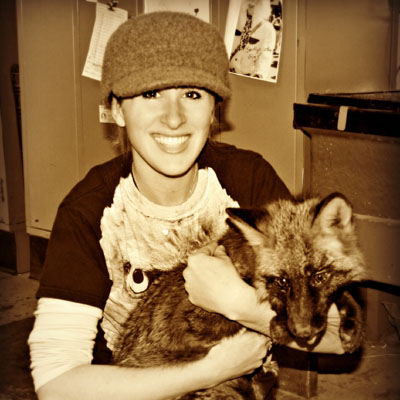I spent the five happiest years of my life in a morgue. As a forensic scientist in the Cleveland coroner’s office I analyzed gunshot residue on hands and clothing, hairs, fibers, paint, glass, DNA, blood and many other forms of trace evidence, as well as crime scenes. Now I'm a certified latent print examiner and CSI for a police department in Florida. I also write a series of forensic suspense novels, turning the day job into fiction. My books have been translated into six languages.
At a guess, I would suggest: slash marks that are too wide for a knife, some partially healed, would indicate animal claws inflicted at different times, but none deep enough or near vital arteries to cause bleeding out. Then water in the lungs would indicate drowning, though that is not always a definite indicator. Drowning is an elimination diagnosis, as in you eliminate other possible causes.
That’s more of a question for detectives, since ‘solving ‘ the case is their responsibility—I’m just there to provide forensic support. But in the cases I’ve been involved with, luck is of course a huge factor.
Yes, to some extent. That’s what I’m doing now. It all depends on how much staff and equipment the agency has. For instance I’ll collect items and process them for fingerprints or do preliminary tests for blood or semen, but it’s unlikely that a DNA analyst would also be doing crime scene work.
Nothing that is nationally famous.
Zookeeper and Animal Trainer
 Which cuddly-seeming animals are actually dangerous to be around?
Which cuddly-seeming animals are actually dangerous to be around?
Meter Maid
 Is it tough to have a job that consists exclusively of ruining peoples' days?
Is it tough to have a job that consists exclusively of ruining peoples' days?
Personal Injury Lawyer
 What's the most frivolous case you’ve handled?
What's the most frivolous case you’ve handled?
A good way to get a handle on the situation is to look at online job postings from places where you might want to work--the local police department, the county morgue, the state crime lab. They will post the duties and requirements for each position. You can also check the same information on the websites of professional organizations such as the American Academy of Forensic Sciences or the International Association for Identification. That should give you a good start.
Sure, you can email me at Lisa-black@live.com.
Usually we can assume what kind of cells will be on it depending on where it was collected from—if from a pop can, it will probably have saliva and skin cells. From underwear might have semen. If from a dark stain, probably blood. How long it takes depends on the type of analyses done and the type of DNA testing—STR, ySTR, mitochondrial, etc. It will take at least a day or two, and after that it depends on the lab’s backlog. We send our DNA to a state lab and it will take between a month and four months to get the results back. If detectives or prosecutors want it faster and someone’s budget is willing to pay for it, we can send it to a private, accredited lab and pay for a faster analysis. They can do it in as quickly as three days or up to a week or two depending on what you want to pay for. If you want it in a week it will cost a few thousand dollars—something like $600 a sample plus upcharges for expedited service and an overall charge, if I’m remembering correctly. If you want more like three days it will be more like $5000. That’s for the basic three samples—victim, suspect and questioned sample.
-OR-
 Login with Facebook
Login with Facebook (max 20 characters - letters, numbers, and underscores only. Note that your username is private, and you have the option to choose an alias when asking questions or hosting a Q&A.)
(A valid e-mail address is required. Your e-mail will not be shared with anyone.)
(min 5 characters)
By checking this box, you acknowledge that you have read and agree to Jobstr.com’s Terms and Privacy Policy.
-OR-
 Register with Facebook
Register with Facebook(Don't worry: you'll be able to choose an alias when asking questions or hosting a Q&A.)